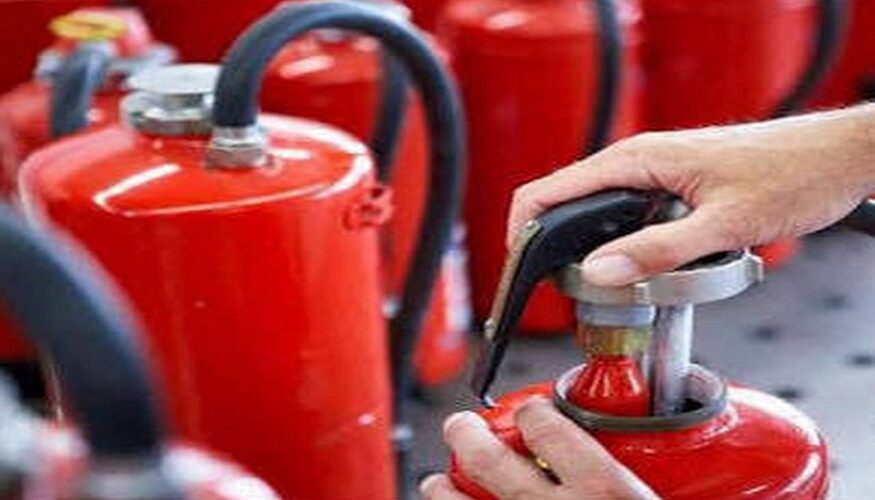When you think about fire extinguisher servicing, you probably picture someone checking the pressure gauge or replacing an expired tag. While these are key components, a proper service goes far deeper than most people realize. Fire extinguishers are essential life-saving tools, and their reliability depends on detailed, regular checks that ensure they will work when you need them the most.
If you’re a home or business owner, you may be surprised to learn about some of the lesser-known elements that get tested during routine maintenance. In this blog, we’ll uncover three things you probably didn’t know are part of the servicing process — and why they matter just as much as the basics.
1. The Support Bracket
You might not think much about the bracket that holds your fire extinguisher, but during a professional fire extinguisher service, it gets tested too. The bracket isn’t just a convenient way to hang the extinguisher — it’s a safety-critical component. Imagine an emergency where someone goes to grab the extinguisher quickly, only to find it has fallen, become damaged, or is no longer within reach. A loose, weak, or corroded bracket could be the reason.
During a maintenance check, technicians will:
- Inspect the bracket for structural integrity
- Ensure it’s tightly mounted to the wall or stand
- Check for rust, cracks, or other signs of wear
- Confirm that the extinguisher fits snugly in place without wobbling or slipping
If a bracket is found to be faulty, it may be replaced on the spot, or the extinguisher may be relocated for better accessibility. This is particularly important in workplaces where extinguishers are mounted in high-traffic or outdoor areas, where environmental exposure can accelerate deterioration.
2.The Extinguisher’s Weight
Another lesser-known test is the weighing of the fire extinguisher. While the pressure gauge gives a quick indication of the unit’s readiness, it’s not always accurate, especially in older models. That’s why weighing the extinguisher is a crucial part of fire extinguisher maintenance.
Over time, extinguishers can lose pressure or chemical agent without any obvious signs. A drop in weight can indicate:
- A slow leak
- Partial discharge from accidental use or tampering
- Expired or degraded contents
Technicians will compare the current weight of the extinguisher to its labeled full weight. If there’s a discrepancy, they’ll either recharge it (if the unit is rechargeable) or recommend replacement if it’s a disposable model.
This check is especially vital for CO₂ extinguishers, which don’t have pressure gauges at all. In such cases, weight is the only reliable indicator of whether the unit is full and functional.
3. The Condition of the Internal Components
One of the most surprising parts of fire maintenance services is what happens on the inside of the extinguisher. While the external appearance might seem fine, the internal components may tell a different story. During periodic inspections (typically every five years for most models), a more thorough examination known as a hydrostatic test is conducted.
This process involves:
- Discharging the extinguisher
- Opening it up to inspect the internal lining and mechanisms
- Checking for rust, corrosion, or blockages
- Refilling and re-pressurizing the unit
Why is this necessary? Because internal corrosion is silent but dangerous. It can cause the extinguisher to fail under pressure, which not only renders it useless in an emergency but could also pose a safety risk to the user.
For businesses, this level of attention ensures compliance with Australian Standards (such as AS 1851), but even homeowners can benefit from understanding the value of this test. It reinforces the idea that a fire extinguisher isn’t a “set and forget” tool — it’s a safety device that must be actively maintained from the inside out.
Why These Tests Matter
At first glance, some of these tests might seem overly technical or even excessive. But consider this: in the middle of a fire emergency, there’s no time for surprises. Every part of the fire extinguisher — from the bracket to the internal chamber — needs to perform flawlessly.
Failing to check these lesser-known elements can lead to:
- Malfunction during use
- Safety hazards from faulty discharge
- Non-compliance with safety regulations
- Increased liability for businesses
The next time you schedule a fire maintenance service, remember: there’s a lot more going on than meets the eye. From weighing the unit to inspecting the mounting bracket and checking internal components, these “hidden” checks play a crucial role in ensuring your extinguisher is ready for action.

